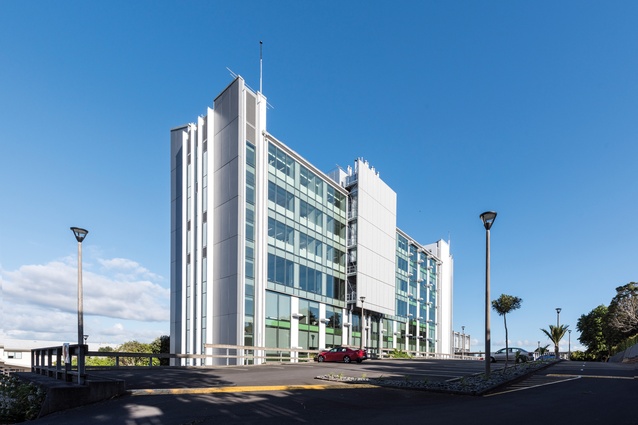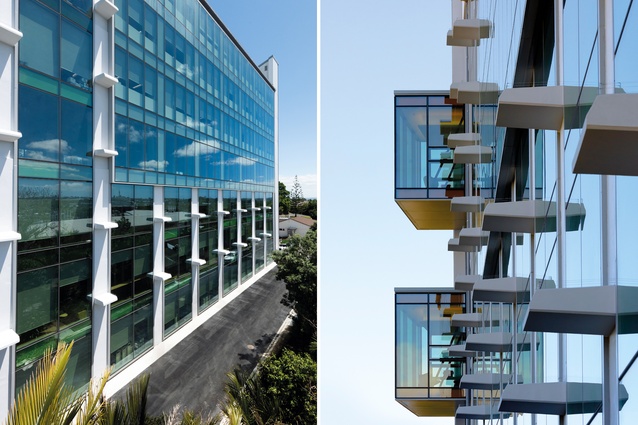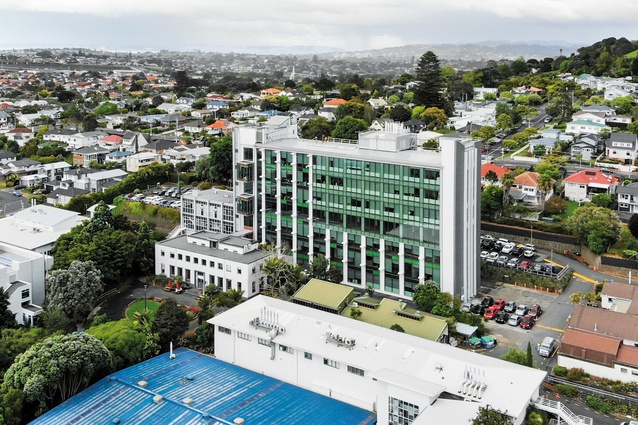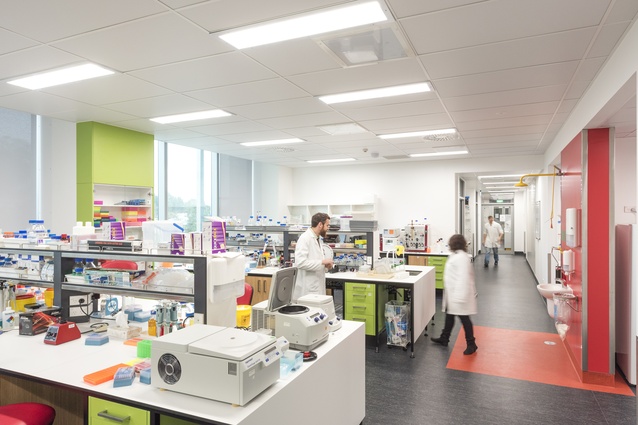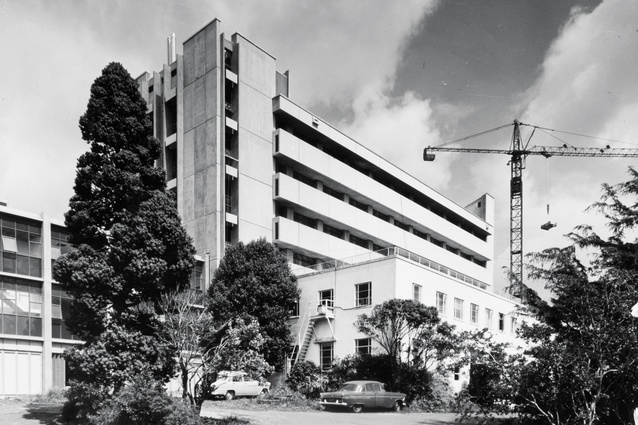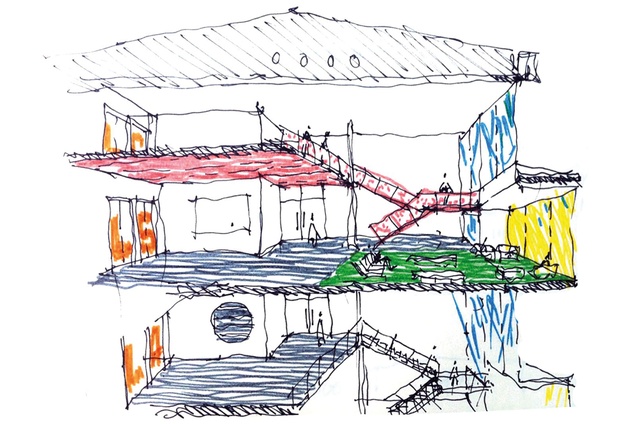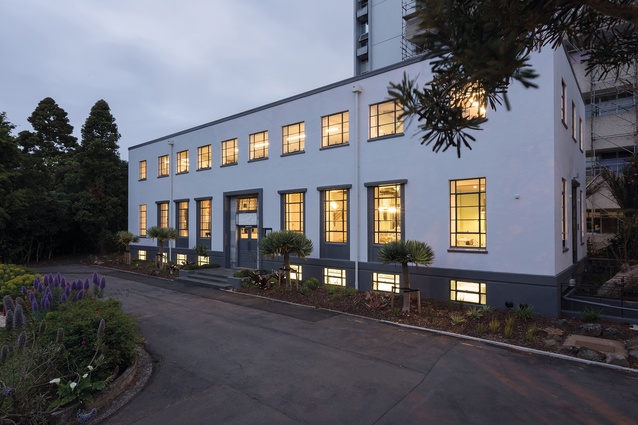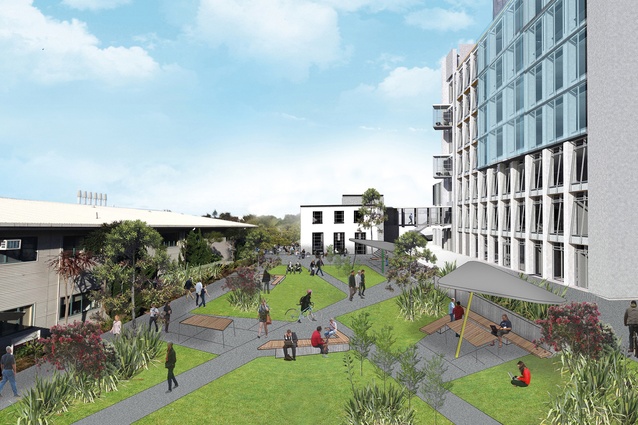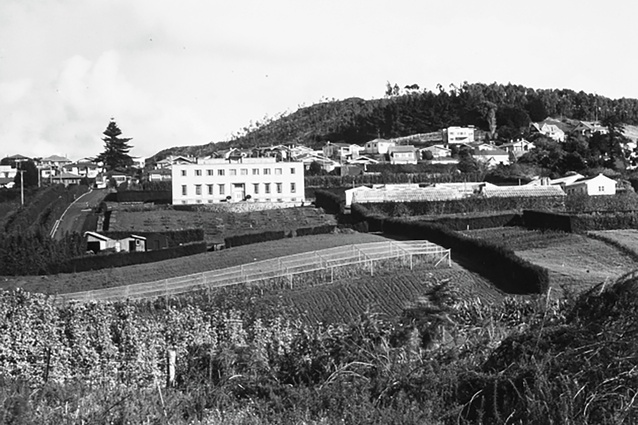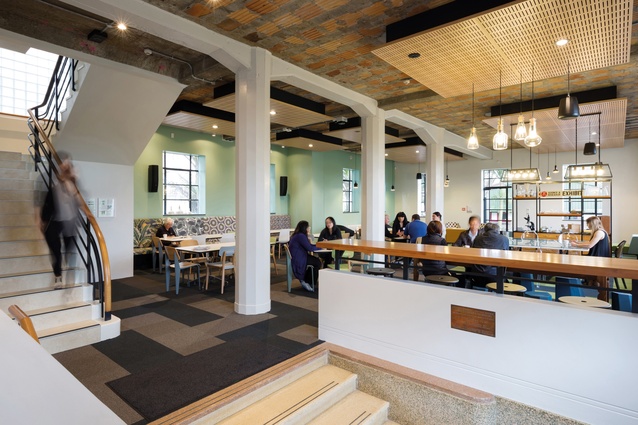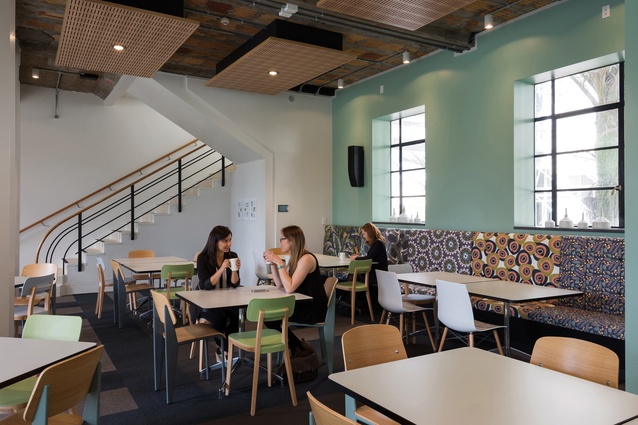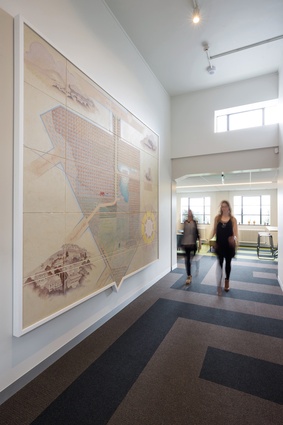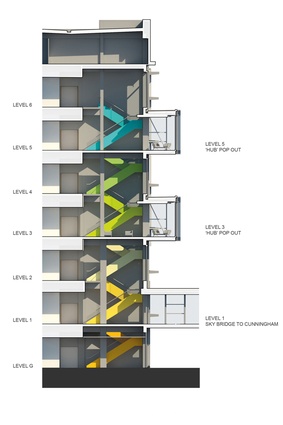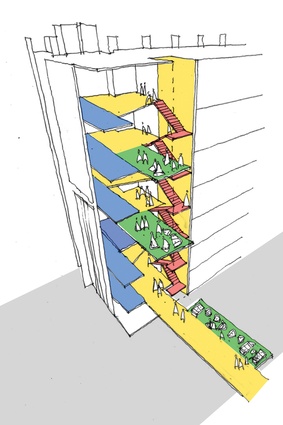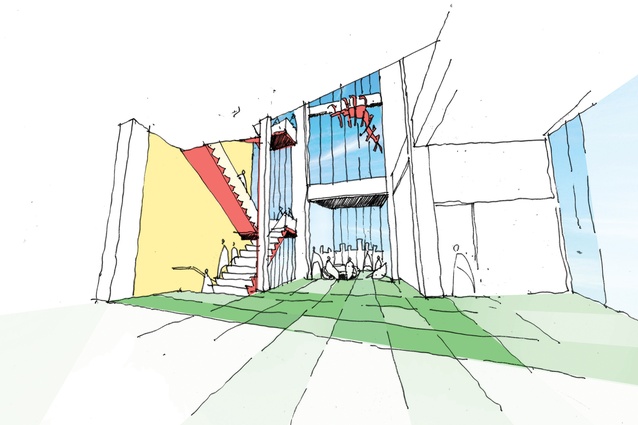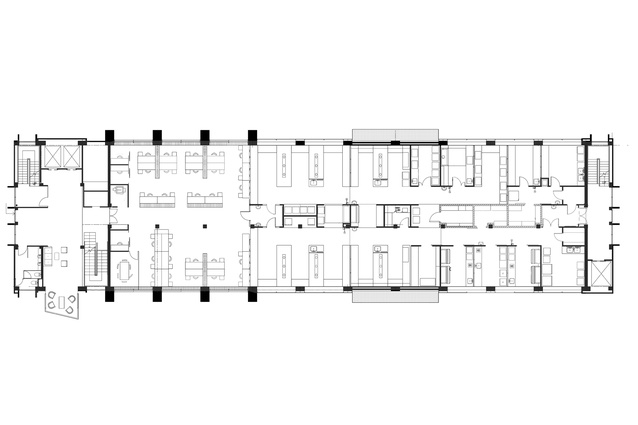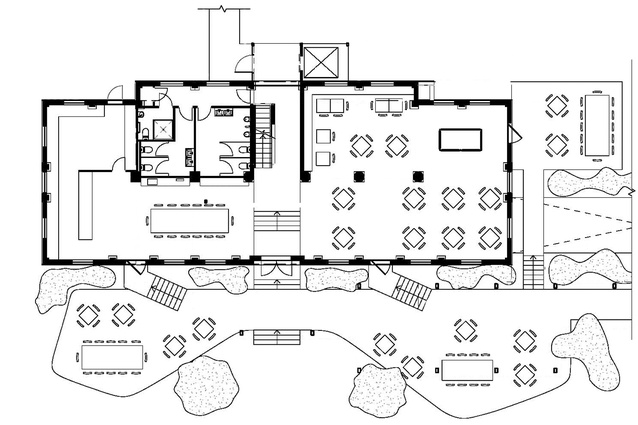Reforming the servant and served
Plant & Food Research’s Mount Albert site has received a radical makeover by Bossley Architects and Lab-works Architecture. Chris Barton looks at the transformation and the shedding of the spandrels.
It has always been a beast of a building, plonked insensitively on the grassy flanks of Mount Albert, just below Alberton House and defiantly incongruent in its eastern-bloc European brutalist aesthetic. Oddly, Pete Bossley has always been one of the few to defend Plant & Food Research’s Auckland headquarters. Not, the 2012 NZIA gold medal-winner hastens to point out, for its looks but for its Louis Kahn-like ‘servant’ and ‘served’ spaces – a concept Kahn regarded as “the basis for the modern plan” in architecture.
He’s talking about the huge horizontal spandrels – ducting servants clipped to the façade of each of the seven floors of the 1973 Hamilton Building (named after 1953–1971 DSIR director-general, William Hamilton) to feed air to the Mount Albert Research Centre’s 350 workers.
In good Kahnsian style, these servant spaces were indeed ordered around the served spaces – the building’s offices and labs. The only problem was that, from the outside, they were so big, they looked ill-proportioned and, from the inside, coming up to eye-height, the ducting did somewhat obscure the light and the expansive suburban views across the city.
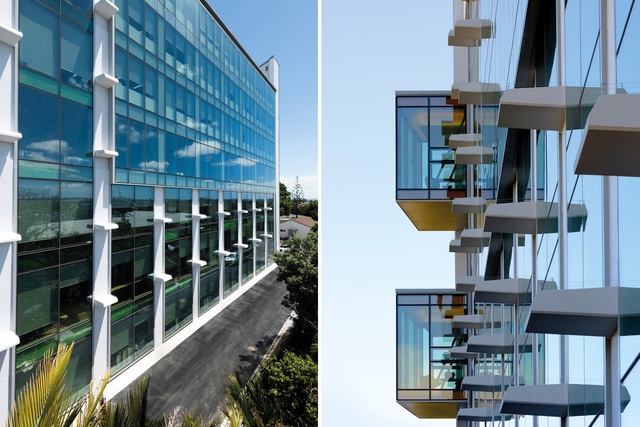
Thankfully, in Bossley Architects’ and Lab-works Architecture’s $49-million redevelopment, which includes four floors of purpose-built laboratories and two floors of collaborative office and meeting space, the ugly spandrels are gone. However, the corbels remain as an eccentric leftover: a sign of support for the removed, unloved spandrels and, perhaps, a nod to history and the modernist master Kahn. Look hard enough and, sometimes, their ghost reappears.
The makeover, which stripped the building back to its bare concrete floors, beams and columns, now has floor-to-ceiling windows and plenty of light and views. There’s also a Kahn-like quality to the eCubed-designed air system, which is re-routed over the roof and down a hanging ‘saddlebag’ on the western façade, open to the elements but enclosed by mesh, on account of the birds seeing it as a served space and wanting to nest there.
Bossley’s boldest move is extreme: to mess with the idea of servant staircases, introducing a new open stair within a defunct vertical duct that combines with generous landing areas and two pop-out lounges dramatically punching through the eastern façade on two levels. Served and servant intertwine to encourage ‘bump’ and other staff interaction.
The outdated silo-like laboratories that no longer complied with codes have been massively modernised with writing areas separated from labs, not unlike the design of Kahn’s famous Salk Institute at La Jolla, California. There, in 1963, the architect recognised that there should be “a clean air and stainless-steel area, and a rug and oak-table area”, the latter also being described as “a place for peace, pencil, paper and pipe” for each scientist.
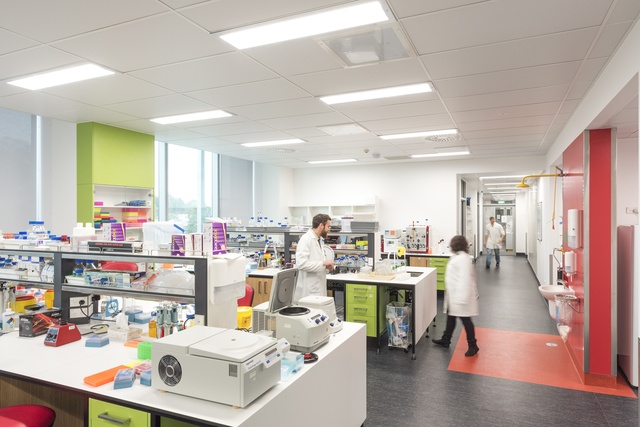
The new labs don’t quite aspire to that vibe but Level 6 – home to three science teams from Plant & Food Research’s Bioprotection Portfolio – has 542m2 of high-tech, enclosed physical containment (PC) laboratories to PC2 and PC3 standards and 216m2 of open-plan desk and meeting-room space. Access in and out is highly controlled. Peering through the glass, the eye is drawn to a central decontamination area – red, with a shower indicating the ever-present riskiness of this scientific work.
As well as a physical makeover, including the removal of asbestos, the Crown Research Institute’s (CRI) Mount Albert complex has also undergone extensive reprogramming, also known as change management and “new ways of working”. Kahn would agree: “I believe the architect’s first act is to take the client’s programme and convert it to architectural life.”
In essence, the reprograming meant dispensing with the existing central loaded corridor and large offices, in favour of an open-plan, ‘activity-based working’ (ABW) scheme – ostensibly to boost staff interaction and morale. It’s fair to say the jury is still out on the benefits of ABW and the new ways of working met with some resistance. “Open plan is fine but I need an office” was a common refrain during the extensive consultation process needed to develop the return brief.
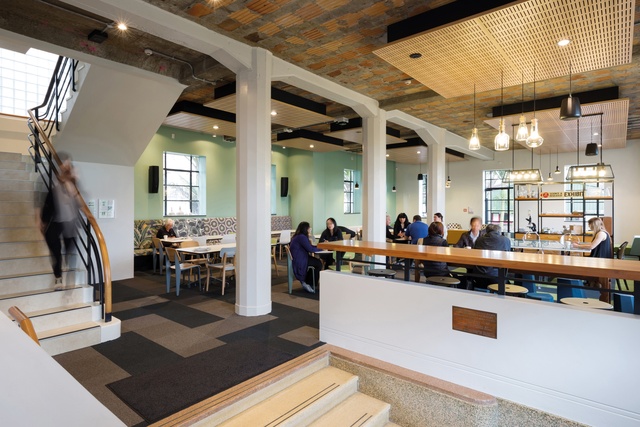
The most radical open-plan offices are on the first and second floors, where circulation has been shifted from a central corridor to a ‘boulevard’ along the eastern face, allowing light to reach across the entire floor, which is interspersed with a variety of desk arrangements, informal collaboration zones, shared meeting spaces and private break-out rooms. Everyone also has their home desk, making it a less-extreme version of the ABW dogma, now de rigueur in office design.
The redevelopment also included refurbishment of the adjacent Padfield Building, used for consumer research, and the two-storeyed art-deco Cunningham Building, opened in 1939, which was transformed into the campus’ kitchen and café and an array of social and formal meeting spaces. It’s accessed by a glazed sky bridge from the first floor of the Hamilton Building.
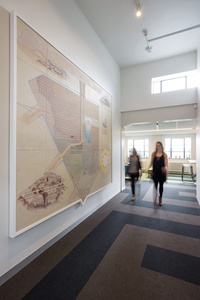
The entrance features a beautifully restored 1939 James Turkington mural of the Mount Albert site and its activities. The Cunningham Building also needed extensive removal of asbestos and was stripped back to its original construction, with the beam and terracotta infill flooring systems left exposed, as are the hexagonal columns previously hidden above suspended ceilings. The handsome art-deco staircase was repaired and the non-complying aspects of the balustrade negotiated away, with Council allowing it to display its former glory and continue to be used.
The building was seismically strengthened by running reinforcing steel vertically from the basement through each floor slab to connect with the roof, and then the internal face of all external walls was sprayed with up to 200mm of concrete. The leaking bituminous roof needed replacing and the existing steel windows, many of which had been sealed up, were repaired. New exterior doors were installed in the character of the originals and the stucco cladding restored. Yet to be completed is the courtyard in the space between the three buildings.
The largely functional makeover involved a lengthy building process that began in November 2014 and was completed in April 2018, thanks to a requirement that Plant & Food remain operational during construction. That involved Bossley Architects also designing the “decanting process” – shuffling staff from one place to another and enabling them to continue working as alterations were completed in pairs of floors from top to bottom.
The more-efficient layout has left an entire floor available for future use. The overall facelift brings a less-brutal, more-refined building to the site plus a much more marketable environment for the world-leading research this CRI does. Perhaps the only missed opportunity here is a Plant & Food building embracing plants… and to discover whether such a design would see them as servants or served.
This article first appeared in Architecture New Zealand magazine.


